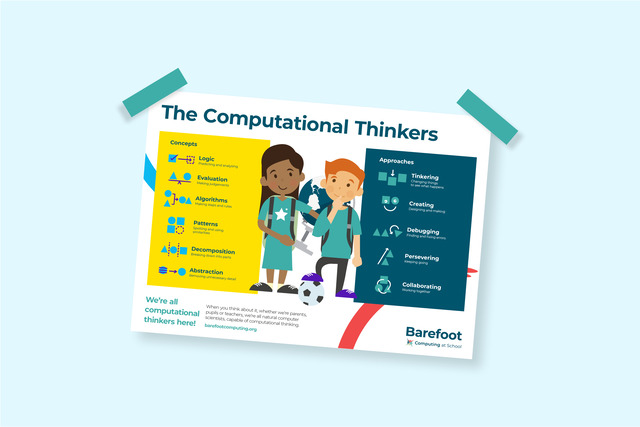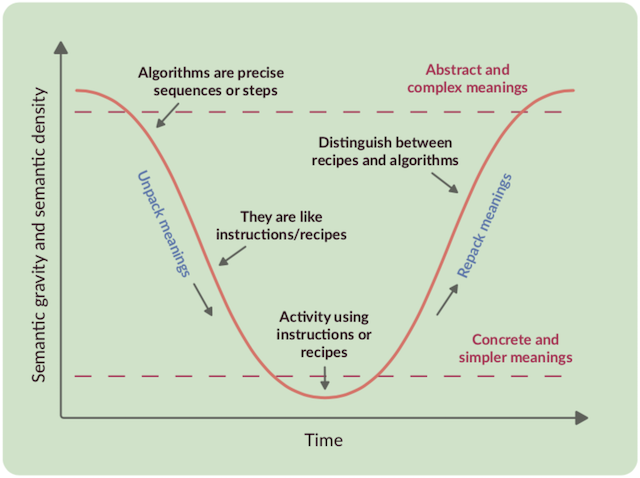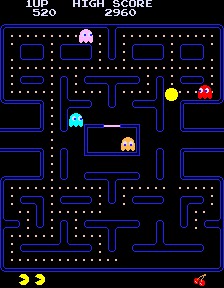Using commercial video games within computer science education to introduce primary students to programming concepts.
Neil Rickus, School of Social Sciences, Humanities and Education, University of Hertfordshire.
Neil is a Senior Lecturer in Computing Education at the University of Hertfordshire and UCL. He also undertakes work independently, including running computing workshops for children, as a primary education specialist for the BCS, and as a resource developer for Cambridge University Press and the National Centre for Computing Education (NCCE).

Keywords: Computing education, computer science education, computational thinking, programming, coding
Abstract
This thought piece will examine how commercial video games primarily designed for entertainment can be used within Computer Science (CS) education to introduce primary students to programming concepts. CS education is increasingly seen as essential to students’ education, with developing Computational Thinking (CT) skills (Wing, 2017) to solve problems recognised in curricula worldwide (Papadakis, 2021) (See Figure 1).

For example, within England, CS content has been included within the National Curriculum subject of Computing since September 2014 (DfE, 2013). However, primary teachers can lack subject and pedagogical knowledge to effectively teach CS (Falkner et al, 2015). There is also concern around the challenges pupils face when introduced to programming concepts (Royal Society, 2018), such as variables, which store data whilst a program is running and provide a foundation for other aspects of computing (Grover et al, 2019).
The popularity of commercially developed video games, coupled with their ability to increase engagement, has been shown to deliver benefits within schools (Kafai et al, 2015). Carefully selected video games have the potential to support students in developing their understanding of programming concepts through connecting abstract concepts with concrete elements within games (Zhang et al, 2014), which can be implemented within their own programs.
The few existing initiatives involving commercial video games typically focus on teaching the basic concept of sequencing instructions (Digital Schoolhouse, 2019), or text-based programming with older children (Isomöttönen, 2011), whilst the majority of research examining the teaching of CS focuses on older students, such as at undergraduate level, with limited evidence available for effective approaches to teaching primary aged children in schools (Waite, 2018).
Introducing students to programming concepts
When first introduced to new concepts, students typically work away from the machine, known as “computing unplugged” activities, to mimic a computer to solve problems (Caldwell et al, 2017). Such activities require planning as part of a semantic wave, as shown in Figure 2, to ensure simpler meanings introduced are linked back to abstract concepts and technical vocabulary (Curzon et al, 2018), along with avoiding misconceptions. In addition, students might confuse their usage of vocabulary with other subject areas (Rich et al, 2022), such as the use of the term “variable” with its definition in scientific experiments.

Figure 2. Through structuring learning as a semantic wave, simpler meanings introduced can be linked back to abstract concepts and technical vocabulary. Image from - https://static.teachcomputing.org/pedagogy/QR6-Semantic-waves.pdf Contains public sector information licensed under the Open Government Licence v3.0 - https://www.nationalarchives.gov.uk/doc/open-government-licence/version/3/.
Within primary schools, block-based environments, where pupils put blocks of instructions together like a jigsaw, are used to make programming accessible and to limit syntax memorisation (Ofsted, 2022). Whilst such environments can introduce misconceptions and non-standard practices (Swidan et al, 2018), which may lead to issues when developing more complex solutions (Meerbaum-Salant et al 2013), the benefits of programming are significant, as students are able to implement creative solutions (Resnick, 2018) and solve more complex problems.
Pedagogical approaches using video games
Whilst game-based learning often focuses on developing children’s knowledge and understanding of a specific curriculum area (Allsop et al, 2015), such as using Times Tables Rock Stars (Maths Circle Ltd., 2023) to support students with learning multiplication tables, the popularity of commercial video games (Baraniuk, 2020), coupled with games’ ability to increase pupils’ confidence and engagement (Kenwright, 2017), have been shown to deliver benefits across school communities (Harrison, 2022). Motivation to learn is regularly cited as a driver for the use of pedagogical approaches involving video games (Felicia, 2020), with educational principles, such as scaffolding learning of new concepts, often evident within a game’s design (Gee, 2003).
Playful and creative experiences using video games are recognised as beneficial to learning (McGonigol, 2012), although the purpose for using the game needs to be elicited (Sheridan et al, 2013), as pupils may not link their use of the game to the intended learning objectives. Careers within the video games industry are increasingly recognised, with teaching resources often focusing on possible roles (BGI et al, 2023), along with esports forming part of a school’s wider curriculum provision, such as through using the resources provided by Digital Schoolhouse, which is by the UK games industry trade body, UKie (Saeed et al, 2018). Concerns around video games, such as the portrayal of violence (Coyne et al, 2021), are often given as a rationale for limiting usage, although resources exist to help choose suitable, age-appropriate, titles (Family Gaming Database, 2023).
Using video games to teach Computer Science
Benefits are evident when using video games to develop Computational Thinking (Werner et al, 2020), with educators able to harness the simplicity of older games (Aycock, 2016) to highlight different aspects of the underlying programs (Walker, 2003) and to help make abstract concepts concrete. For example, when playing a game such as Pac-Man, the relationship between the character eating dots / ghosts and the score increasing can be clearly seen, with lessons then planned to examine how this is implemented within a program (see Figure 3).

Figure 3. Retro video games, such as Pac-Man, enable the implementation of different programming concepts to be investigated by pupils. Image from http://www.mobygames.com.
Through linking video game content to programming concepts (Zhang et al, 2014), students can be supported to develop programs based on concepts within the games, although scaffolding needs to be planned to avoid being overly prescriptive (Kafai et al, 2015). As playing and making video games often take place in a social context, opportunities can be provided for collaboration to develop understanding (Papert, 1980).
Next steps
To investigate this further, an exploratory case study methodology could be used. Whilst this may not lead to definitive conclusions, it enables detailed investigations to be undertaken within an educational setting and to expand on existing theories through examining how they relate to new ideas (Yin, 2018).
When studying CS, students require opportunities to develop declarative knowledge, such as their knowledge of suitable data structures, and procedural knowledge, such as implementing a data structure within a program (Robins et al, 2019). For declarative knowledge, group discussions employing open-ended questions could be undertaken with teachers and students, which will examine students’ understanding of variables and enable a range of responses to be considered (Coe et al, 2021). Discussions with teachers could also examine the pedagogical approaches employed. For procedural knowledge, programs produced by students could be studied to determine how variables have been used, such as if data within a variable is manipulated (Rich et al, 2022).
Finally, to provide richer commentary, semi-structured, non-interventionist observations (Cohen et al, 2017) could take place to examine interactions and the development of programs. Two contrasting mainstream state primary schools could be studied, with non-probability sampling (Coe et al, 2021) used to identify the settings and facilitate analysis through comparing data generated.
